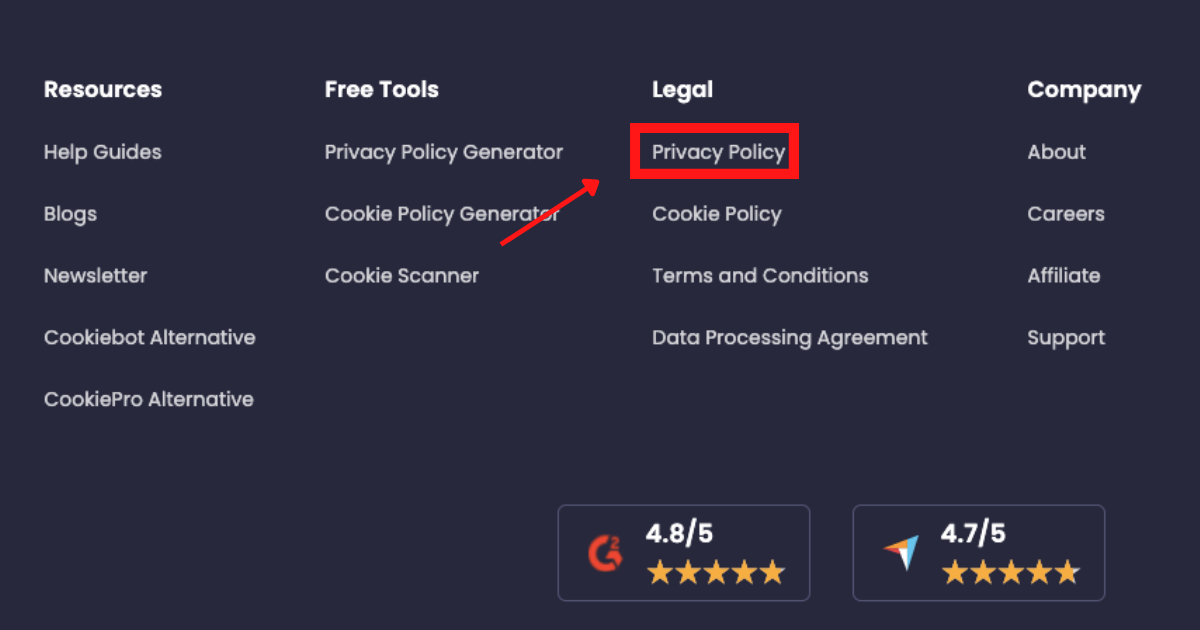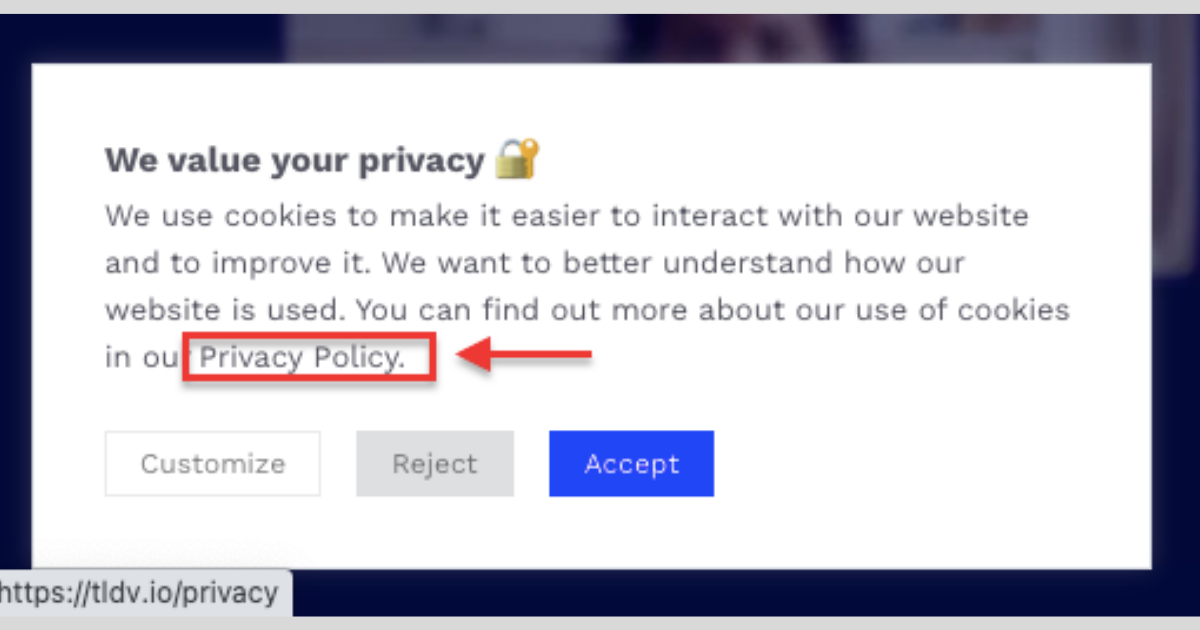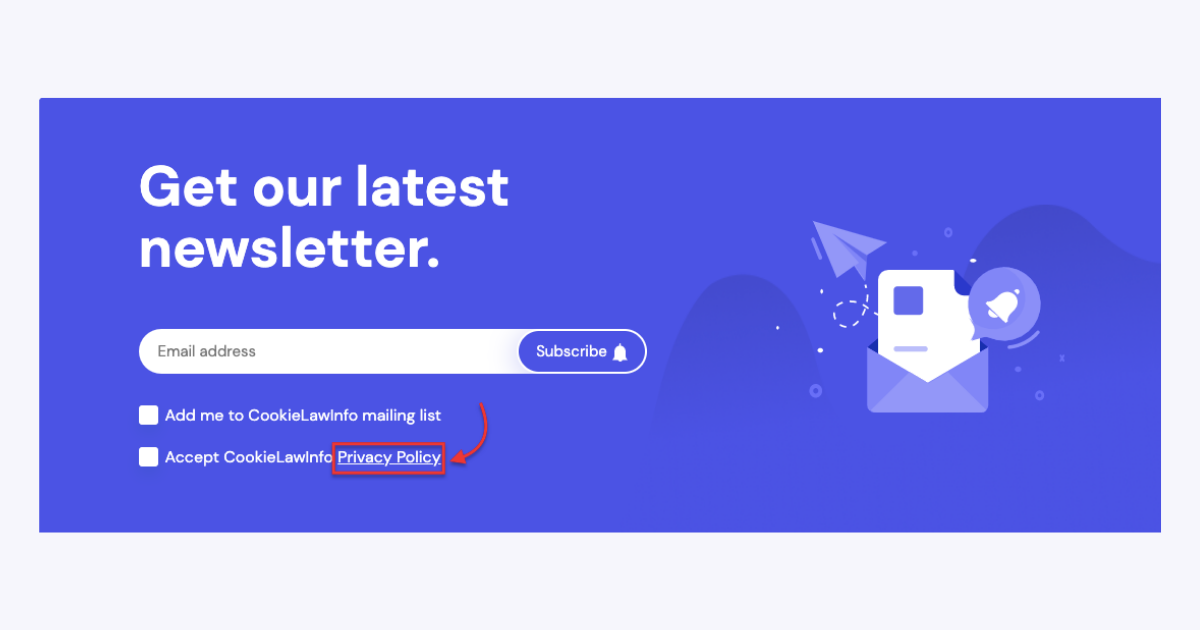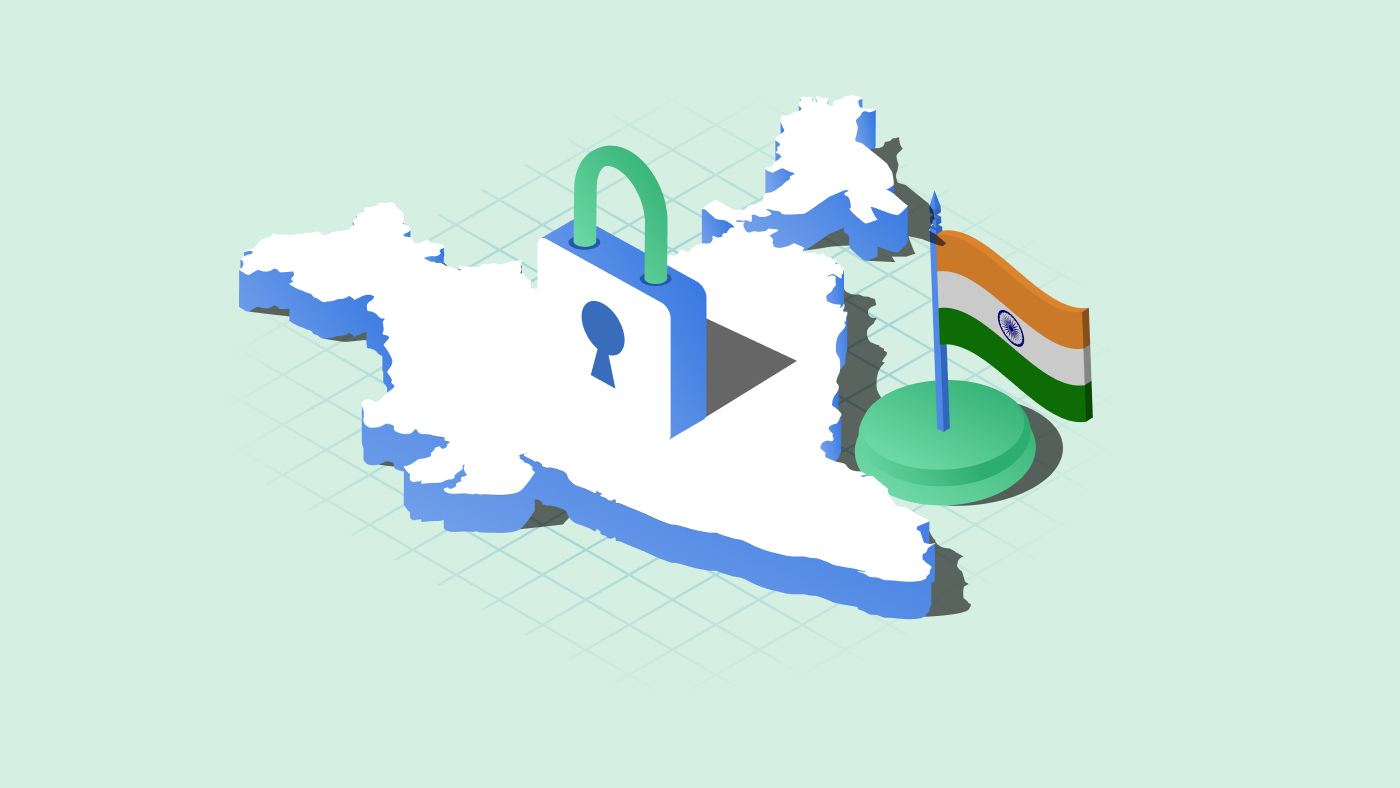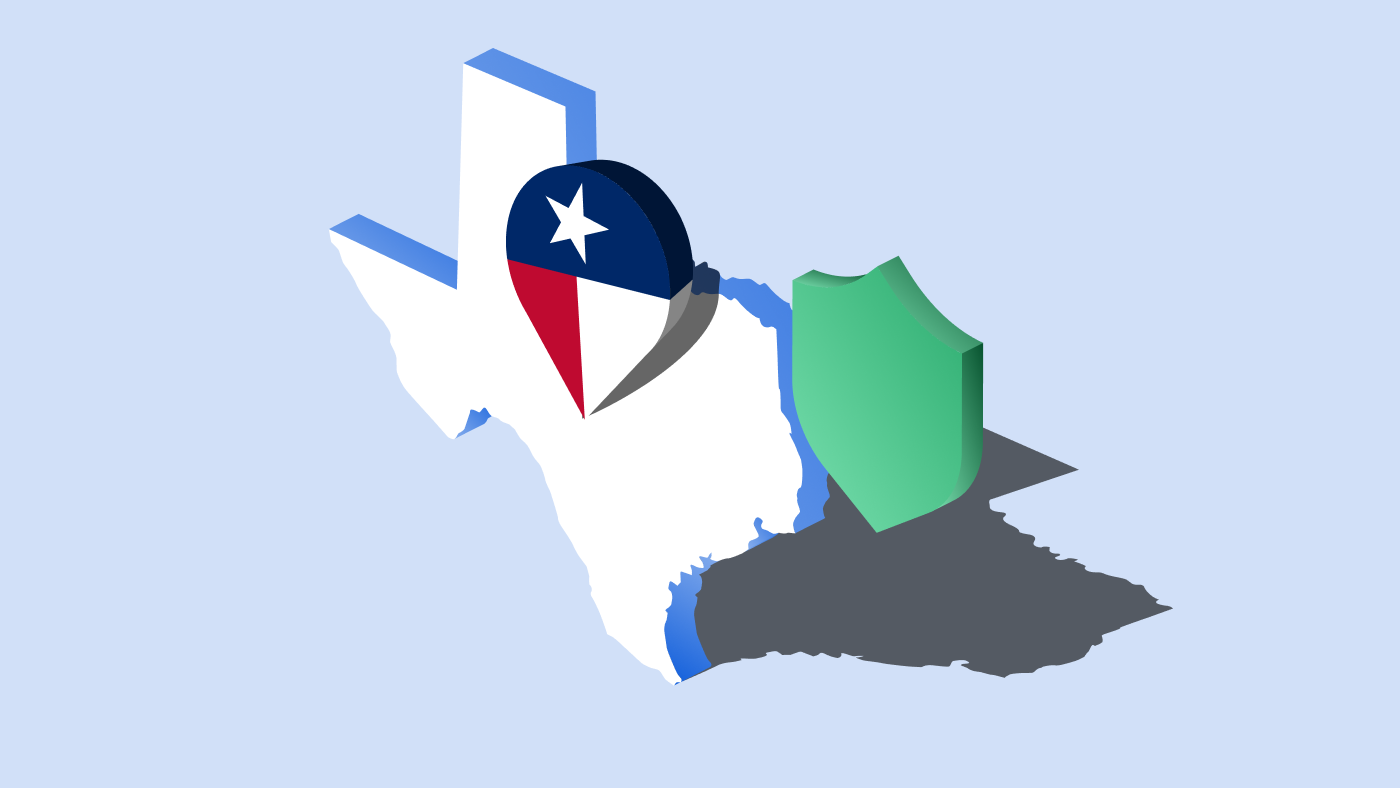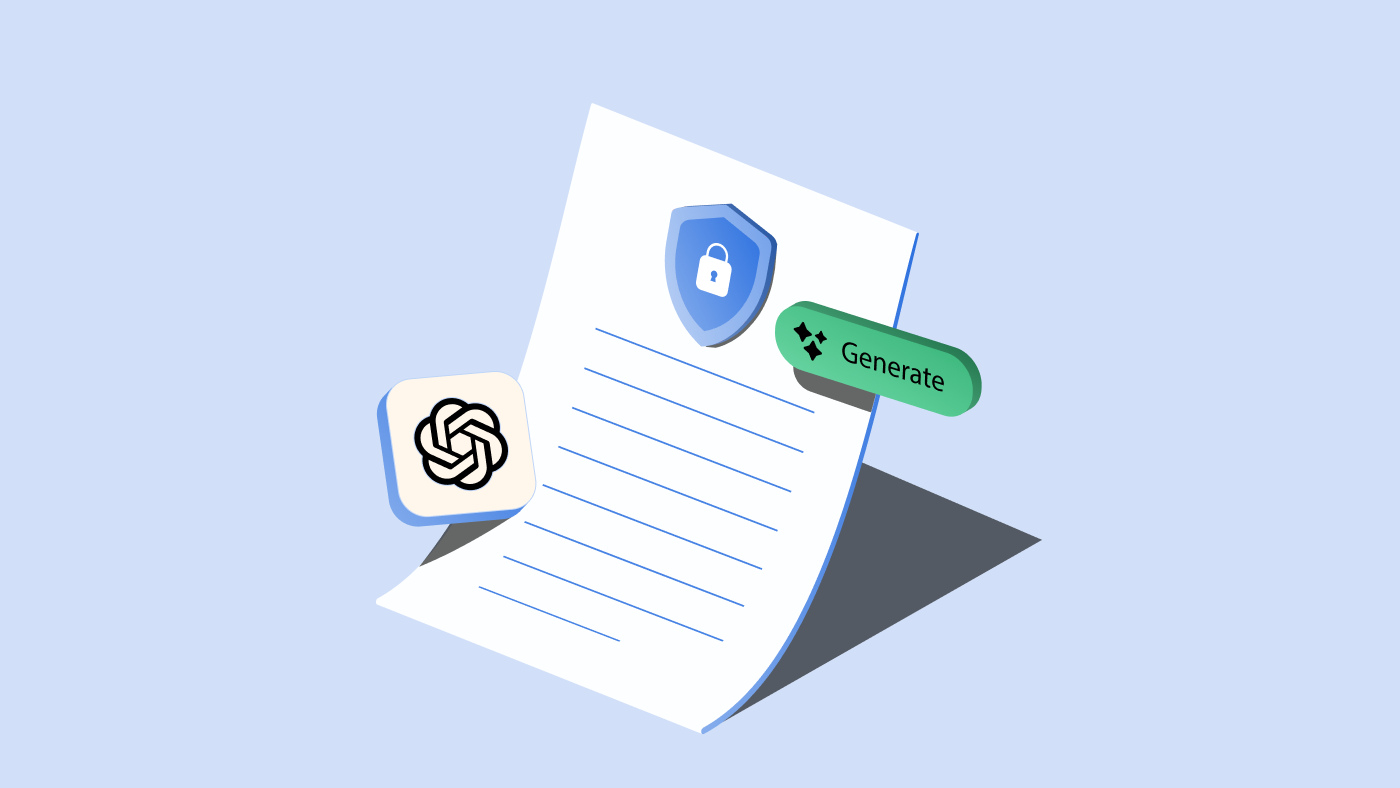Businesses collecting customer personal information must legally add a privacy policy to their website. Drafting one is challenging without proper legal evaluation of data practices. Hiring lawyers to customize a policy is thorough yet expensive. A cost-effective starting point is using a tailored privacy policy template.
This article explains what a privacy policy entails, when legally required, how to create and display one, and provides examples to follow.
For a free privacy policy template, you can try the
Privacy Policy Generator from CookieYes.
- GDPR & CCPA compliant free tool
- Generate privacy policy in minutes
- Simple and clean pre-built template
- Customize and add clauses as required
- No PDFs or downloads, simply copy-paste the text/HTML
What is a privacy policy?
A privacy policy is a comprehensive legal document that discloses how a business handles the collection, usage, disclosure, and security of customers’ personal data and information. It acts as a binding contract between a business and its users.
Essentially, an organization’s privacy policy formally states its intended accountability in handling individuals’ personal information transparently and securely. All websites processing user data are legally expected to be upfront in a privacy policy about their management of customer information.
Why you need a privacy policy?
Here’s why your website needs a privacy policy:
Comply with legal requirements
If you collect information from users on your website, you’re legally required in most countries to have a privacy policy that explains what information you collect, how you use it, and how long you keep it.
GDPR privacy policy requirements
If you are subject to GDPR and your website collects personal data, then you must have a privacy policy on your site. The General Data Protection Regulation (GDPR) is a regulation that was created to protect the privacy of EU individuals and their data. It applies to all businesses that provide goods or services to EU individuals, regardless of size. One of the key requirements of the law is to be transparent with the users about how you are using their data. If your website collects personal data and is subject to GDPR, then you must have a privacy policy.
Art. 13 and 14 of GDPR list the information you need to provide if your business is subject to the law. This applies to privacy policies as well and includes all the sections we explained earlier.
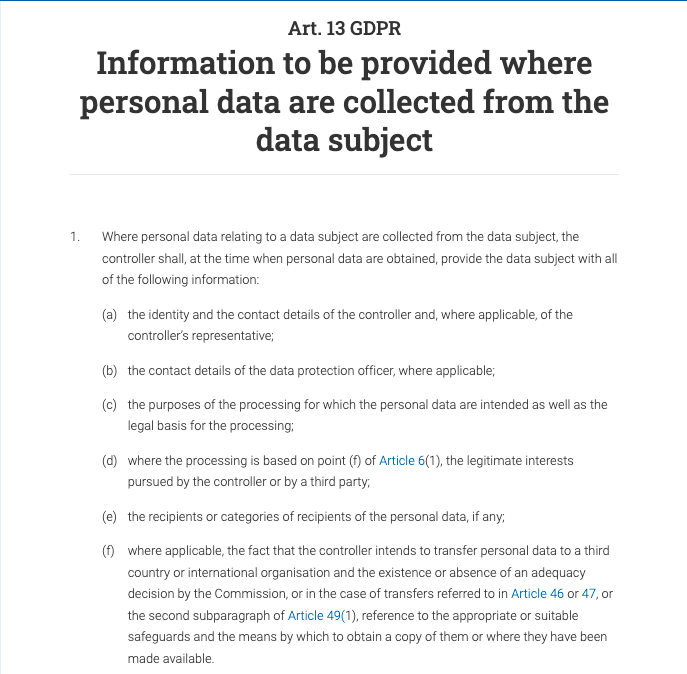
CCPA privacy policy requirements
The CCPA (California Consumer Privacy Act) is a US state law that applies to all businesses that collect personal information about California residents.
To comply with this law, you must make available a privacy policy statement that describes your practices for collecting and using consumers’ personal information. The policy must explain the categories of information the site collects and uses, its purpose, categories of third parties the information has to be shared, consumer rights under CCPA, opt-out options, and contact information of the business or website admin.

UK GDPR privacy policy requirements
A key principle of UK GDPR is to keep users informed of how businesses collect, use, share, secure and process their personal data. So, your privacy policy should aim to reflect this.
Your privacy policiy should primarily inform users about how and why you collect personal data, different user rights and how to exercise them, and how you protect personal data. It should be written in clear and plain language.
Other laws such as Quebec Law 25, Switzerland nFADP, Brazil LGPD, Singapore PDPA, Canada PIPEDA, South Africa POPIA, Virginia CDPA, Utah CPA, etc. also require websites to maintain privacy policies.
Protect users’ rights
A privacy policy will inform your users what types of information you collect, how you use that information, and who has access to it. It also lets them know exactly how they can exercise their rights regarding their data—E.g. if they want it deleted or amended.
Build trust with customers
Customers want to feel safe when they give their personal information to businesses online. A solid privacy policy can help build trust between your business/website and its customers by demonstrating that you practice data collection responsibly. This will also help your business from potential litigation related to user privacy.
What information do I need to include in the privacy policy?
Privacy policies are the first line of defense for your business. They are critical to protecting your customers’ privacy and ensuring that you can continue to provide them with the high-quality services they’ve come to expect from you. Once a user reads through these policies, they should understand how their data will be used.
A privacy policy should include the following details:
What information do you collect and why
Your website’s privacy policy should describe the categories of information collected, used and disclosed by your business.
How does your site collect personal data about its users? What kinds of information does it collect? Does this include sensitive data? It should go into as much detail as possible about what exactly you collect and why you need it.
The more clear you are about your practices, the less likely people will be to have concerns about being able to trust your site.
How do you collect, use and disclose information
This section should describe all the ways in which your site or application collects, uses, and discloses personal data. What are all the ways in which your site or application uses user data? Do they sell it? Do they share it with third parties? Do they use it only internally? You should explicitly state any exceptions as well.
Data sharing and third-party access
The privacy policy should spell out what data is shared with other businesses, including third parties. It’s important to note whether or not those third parties have their own privacy policies that spell out how they collect and use personal information from users like yours; if there’s another business involved in something like advertising or analytics services for example then they may be collecting information on behalf of them as well.
Use of cookies and other tracking technologies
This section details the types of tracking technologies you use, such as cookies. You can also provide a list of cookies you use and explain how they function. It’s a good idea to include a link to an additional policy page that contains only the list of cookies and their descriptions—not your entire privacy policy.
How long the data is retained
The privacy policy must describe how long the website keeps personally identifiable information before it is deleted from storage.
How the site protects personal data
This section should describe the ways in which the website secures personal data, such as encryption of transmitted data, password protection and authentication methods for accessing personal data, and procedures for disposing of personal data.
Rights over personal data
The policy should clearly state the rights users have over their data and how they can exercise those rights. The policy should also clearly explain what kinds of requests users can make and if there are any limitations on those requests, as per applicable law.
How to opt out
A description of how people can opt out of having their data collected by the website or app, including instructions on how to do so (for example, by using browser settings or site features).
How to contact you
Your privacy policy should also include a section explaining how users can contact you with questions or concerns regarding their data. E.g. Do Not Sell My Personal Information link/option.
Where to display the privacy policy?
The privacy policy should be easily accessible to the users. Therefore, you must place the privacy policy link on the website’s prominent places, such as the website homepage, cookie consent banners, and any popups or pages where data will be collected.
Examples of best privacy policy template
Here are some good privacy policy examples from real websites. These examples demonstrate well-structured privacy policy pages tailored to website specifics.
Infogrid explains in detail what information it collects from its users.
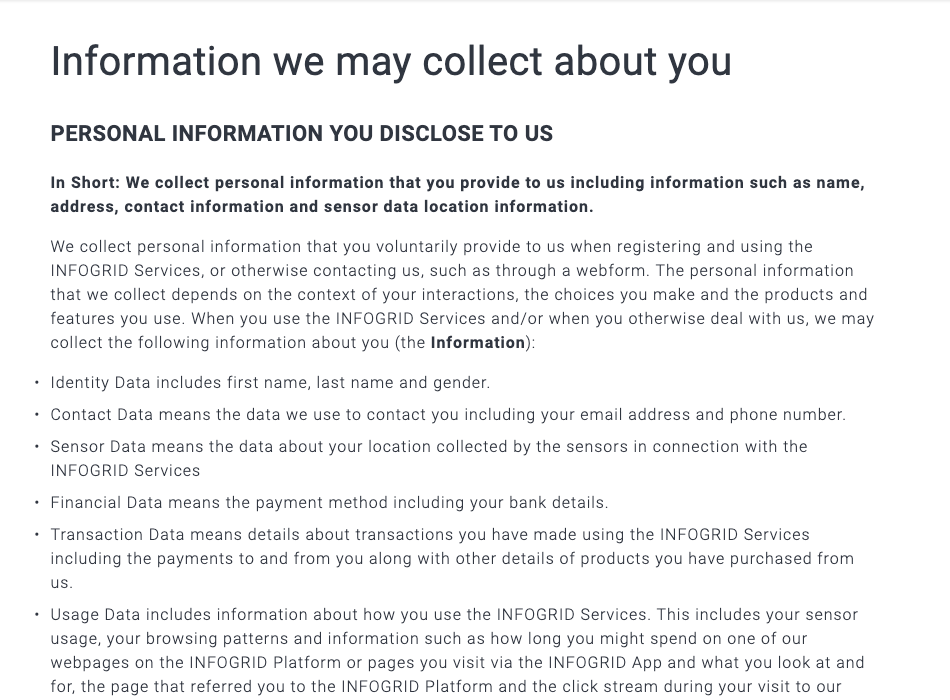
CookieYes uses a tabular format to list the purpose of collecting and using personal data and the legal basis for them.
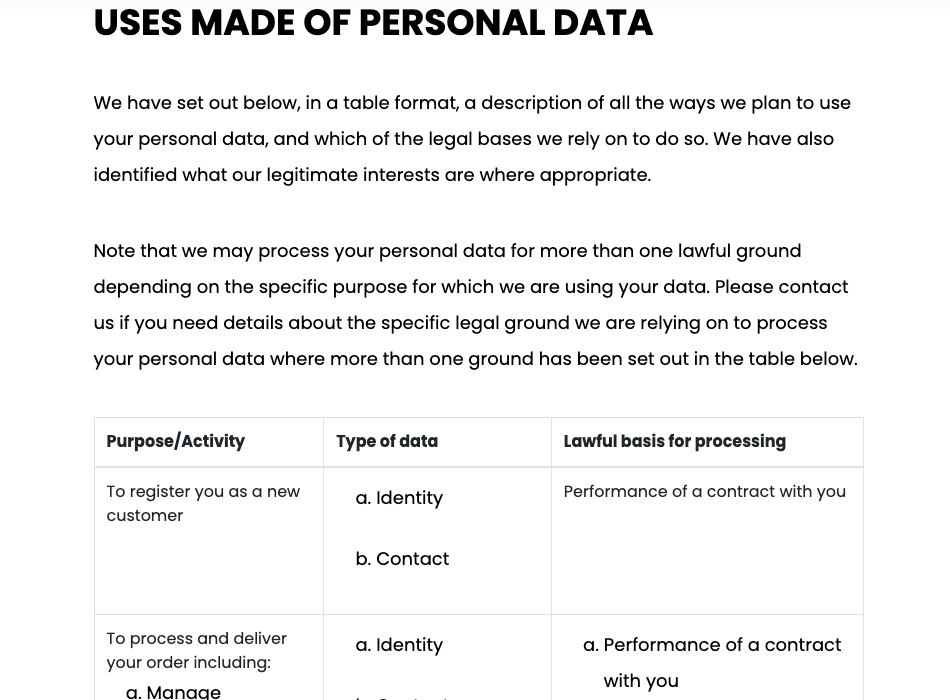
BeeBlum explains the rights users have over their data and how they can review and exercise them.
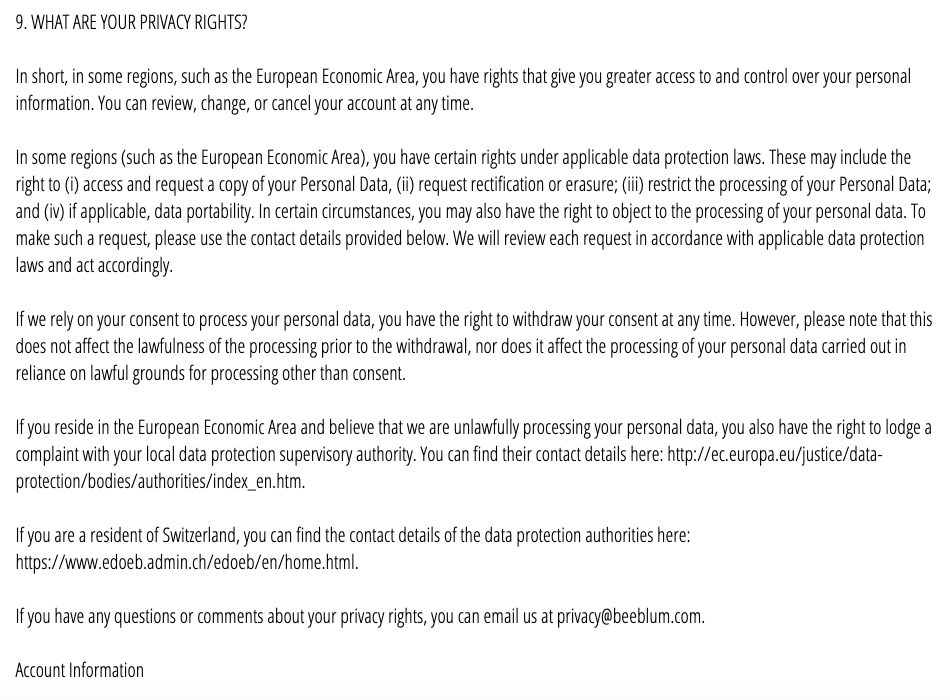
Vera Bradley’s privacy policy explains various opt-out choices users have on the site.
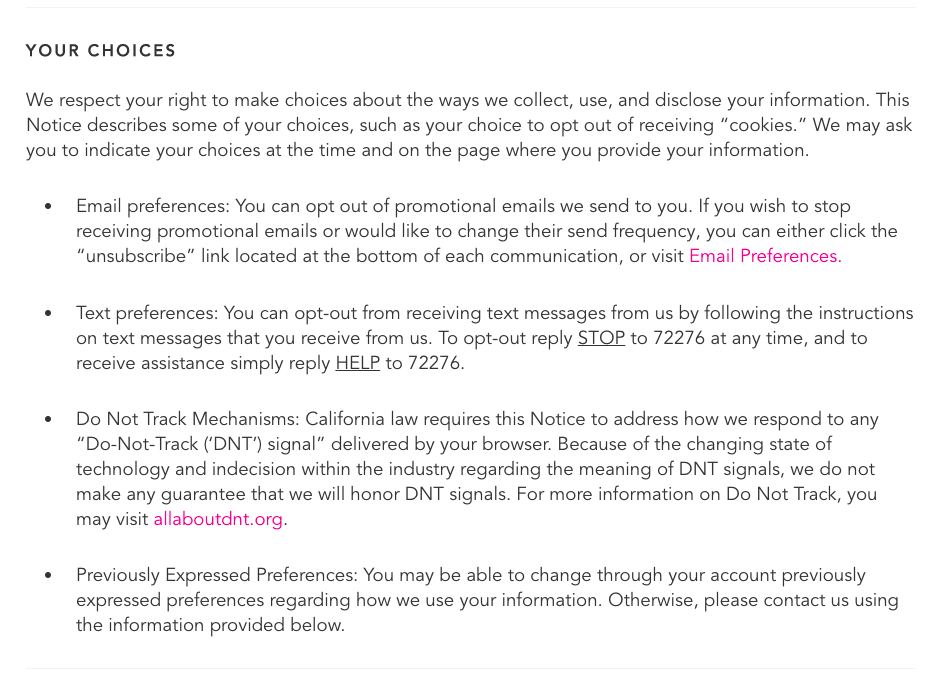
Further reading: E-commerce Privacy Policy Template
How to create a privacy policy for your website?
When crafting a privacy policy, it is important to remember that your goal is to make the policy easy for your readers to understand. To ensure clarity in your writing, keep your document short and simple while using everyday language instead of legal jargon.
When it comes to websites, privacy is a two-way street. A website owner must protect the privacy of their visitors, but also needs to make sure that their visitors are aware of how they intend to use their information. Think about the possible violations of privacy on your site and develop policies to prevent them.
CookieYes can help you create a privacy policy that will cover all the necessary details in just 3 simple steps:
1. Create a CookieYes account
Sign up for free on CookieYes and verify your email address to complete registration.
2. Fill in details
Head to your CookieYes account and go to Privacy Policy. You will see a lot of options each option containing several questions about your site’s personal data processing. Fill them all out and submit.
3. Generate privacy policy
You will get a preview of your website’s privacy policy template. Then, you can copy the text or HTML and add it to your website’s privacy policy.
FAQ on privacy policy template
Do I need a privacy policy on my website?
Yes, you need a privacy policy on your website. What type of privacy policy you need depends on your business, but if you collect personal data about users or use cookies in any way then chances are that you’ll be legally required to have one.
What does a privacy policy include?
The main things your Privacy Policy needs to include for it to be effective are:
- A description of what information you collect from users.
- Why and how you collect personal information from users.
- How and why do you share user data with third parties.
- How long do you keep user data.
- Use of cookies and other tracking technologies.
- Opt-out options available to users regarding the collection of their data.
- Information about the security measures in place to protect personal data.
How do I create a privacy policy?
You can create a privacy policy for your website using CookieYes Privacy Policy Generator.
CookieYes is an online privacy policy generator that’s fast, easy, and free. All you need to do is enter some information about your business, and it will create a customized privacy policy template based on the information provided. You can also edit it further if needed.
You can copy the policy as text or HTML and add it to your website.
Here are a few helpful guides for you to get started:
Privacy policy for Squarespace
Can I write my own privacy policy?
Yes, you can write your own privacy policy. However, writing one from scratch is not easy. Privacy policies are not just legalese—they’re an essential part of a website that collects and uses personal data. A good privacy policy must ensure that users completely understand what data is being collected, used, or disclosed and how and why. It also helps to demonstrate your accountability of compliance with laws.
A bad or non-existent privacy policy can lead to serious legal problems, so it’s not something you want to take lightly. Getting legal assistance is an option, but it is expensive. This is why we created CookieYes Privacy Policy Generator to help you create a legally compliant privacy policy in minutes.
![Privacy Policy Template for Legal Compliance [With Examples]](https://www.cookieyes.com/wp-content/uploads/2022/05/Privacy-policy-01-1.png)
